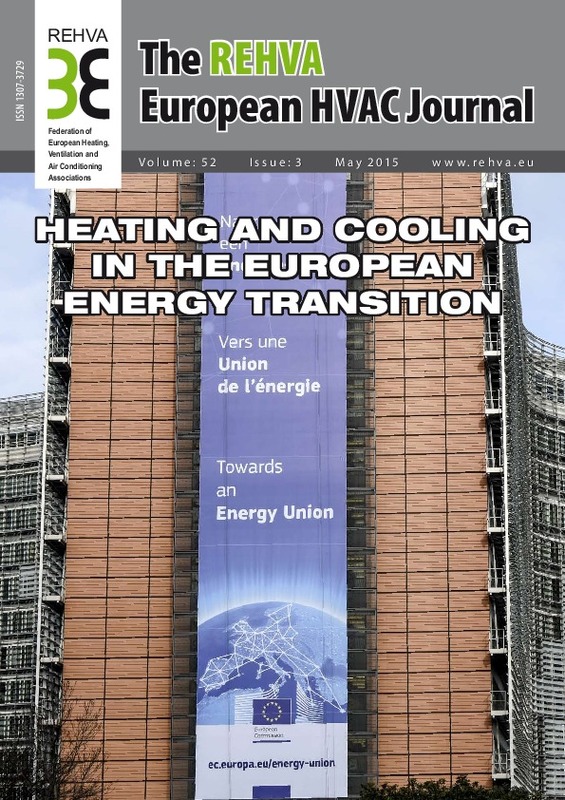JavaScript is disabled for your browser. Some features of this site may not work without it.
Buscar en RiuNet
Listar
Mi cuenta
Estadísticas
Ayuda RiuNet
Admin. UPV
Comparison between Energy Performance Directive related CEN-standards, EU Member States legislation and actual residential buildings consumption
Mostrar el registro sencillo del ítem
Ficheros en el ítem
| dc.contributor.author | García Lastra, Arcadio Manuel
|
es_ES |
| dc.contributor.author | Soto Francés, Víctor Manuel
|
es_ES |
| dc.contributor.author | Pinazo Ojer, José Manuel
|
es_ES |
| dc.date.accessioned | 2017-03-21T07:25:42Z | |
| dc.date.available | 2017-03-21T07:25:42Z | |
| dc.date.issued | 2015-05 | |
| dc.identifier.issn | 1307-3729 | |
| dc.identifier.uri | http://hdl.handle.net/10251/78875 | |
| dc.description.abstract | Since the introduction of the EPBD (Energy Performance in Buildings Directive) in Europe, member states (MS) have developed a great deal of codes, procedures, rules and software tools. The European Union (EU) devotes many resources to harmonizing all these codes among MS, such as the Concerted Action (CA) and the CEN (European Committee for Standardization) standards. However, few countries follow the complete CEN standards and there is uncertainty about the current situation. This paper compares, through a practical case, the CEN standards with codes created in Spain on the basis of a measured building. The conclusion is that at least in the Spanish case there is a mismatch with CEN, regarding the losses in the HVAC distribution sub-systems, which should be fixed. Finally, the results presented can be useful for other countries which are trying to implement similar codes to improve their energy efficiency in the building sector. In 2003 the European Commission (EC) issued a Directive, 2002/91/EC [8]. On 19 May 2010, a recast of the Energy Performance of Buildings Directive [9] was adopted by the European Parliament and the Council of the European Union in order to strengthen the energy performance requirements and to clarify and streamline some of the provisions from the 2002 Directive it recasts. The objective of this directive is to promote the improvement of the energy performance of buildings within the community, taking into account outdoor climatic and local conditions, as well as indoor climate requirements and cost-effectiveness. For new and existing buildings this requires a calculation of the energy performance of the building including heating, ventilation, cooling and lighting systems, based on primary energy. Each building must have an energy certificate and regular inspections of heating, cooling and ventilation systems must be performed. This directive required all member countries to implement the directive in the building codes at the national level by January 2006. Until now this has only been implemented fully in a small number of countries and partially in some others. As the November 2008 Commission Communication for the original proposal states, buildings have significant untapped potential for cost effective energy savings which, if realized, would mean that in 2020 the EU will consume 11% less final energy. The question arises as to whether this goal is actually achievable. This paper analyses or more precisely investigates the extent to which the MS codes and procedures adhere to the new European CEN standards related to EPBD and MS by using the case of Spain as an example. It is our hope that the conclusions will be extrapolated to other MS. In the past, the CEN norms related to EPBD began to appear. Some authors (Bjarne et al. [10]) obtained results from the published CEN drafts. This article extends widely their results since the calculations are done with the definitive version of CEN and the results are compared with real consumption. The building energy demand and consumption is estimated by the Spanish software tools and by the CEN standards. Furthermore, both are compared with measured values from one real building made up of two blocks which share a common heating facility. | es_ES |
| dc.language | Inglés | es_ES |
| dc.publisher | Teknik Yayincilik | es_ES |
| dc.relation.ispartof | REHVA Journal | es_ES |
| dc.rights | Reserva de todos los derechos | es_ES |
| dc.subject | Heating systems | es_ES |
| dc.subject | CEN standards | es_ES |
| dc.subject | Energy performance | es_ES |
| dc.subject | Calculation methods | es_ES |
| dc.subject | DHW | es_ES |
| dc.subject | Building monitoring | es_ES |
| dc.subject.classification | MAQUINAS Y MOTORES TERMICOS | es_ES |
| dc.title | Comparison between Energy Performance Directive related CEN-standards, EU Member States legislation and actual residential buildings consumption | es_ES |
| dc.type | Artículo | es_ES |
| dc.rights.accessRights | Abierto | es_ES |
| dc.contributor.affiliation | Universitat Politècnica de València. Escuela Técnica Superior de Ingenieros Industriales - Escola Tècnica Superior d'Enginyers Industrials | es_ES |
| dc.description.bibliographicCitation | García Lastra, AM.; Soto Francés, VM.; Pinazo Ojer, JM. (2015). Comparison between Energy Performance Directive related CEN-standards, EU Member States legislation and actual residential buildings consumption. REHVA Journal. 52:28-39. http://hdl.handle.net/10251/78875 | es_ES |
| dc.description.accrualMethod | S | es_ES |
| dc.relation.publisherversion | https://goo.gl/BdgwAf | es_ES |
| dc.description.upvformatpinicio | 28 | es_ES |
| dc.description.upvformatpfin | 39 | es_ES |
| dc.type.version | info:eu-repo/semantics/publishedVersion | es_ES |
| dc.description.volume | 52 | es_ES |
| dc.relation.senia | 290190 | es_ES |






